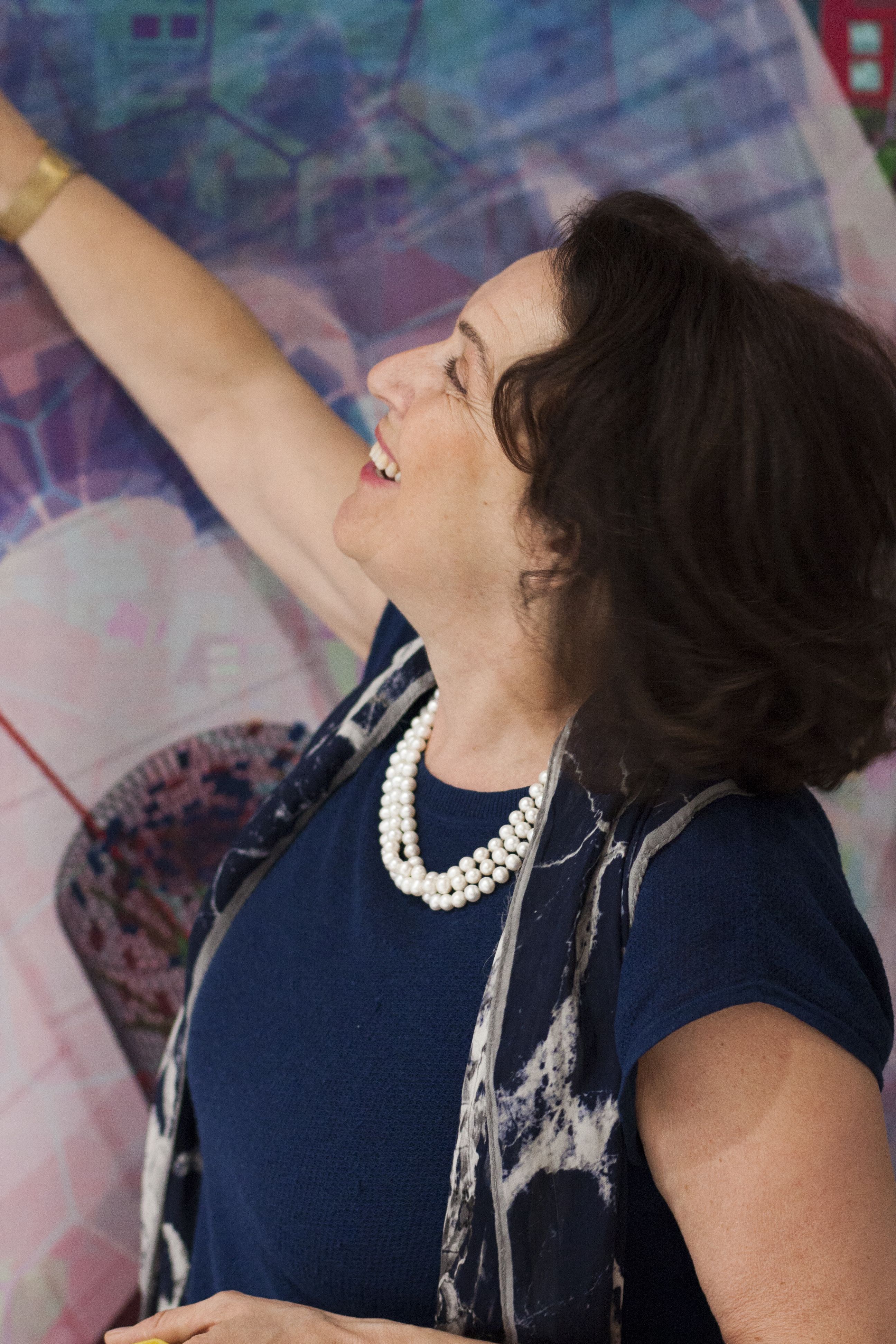 Anyone who thinks physics might be a dry subject would do well to meet Professor Daniela Bortoletto. Having warmly ushered me into her office in the Denys Wilkinson Building, her eyes sparkle as she scribbles on the whiteboard, sweeping me off my feet with a personal lecture in particle physics delivered in a lilting Italian accent and with much humour.
Anyone who thinks physics might be a dry subject would do well to meet Professor Daniela Bortoletto. Having warmly ushered me into her office in the Denys Wilkinson Building, her eyes sparkle as she scribbles on the whiteboard, sweeping me off my feet with a personal lecture in particle physics delivered in a lilting Italian accent and with much humour.
Her lively discussion of her subject is undaunted by my total ignorance. ‘You have studied how F is equal to MA,’ she casually mentions at one point – and I have to confess, to my shame, I’m not clear on exactly what she means, even when she explains that this, Newton’s Law, means force is equal to mass times acceleration. Bortoletto, a professor of particle physics, is understandably shocked (‘Wow!’), but jokily reassures me: ‘It’s fantastic for me to talk to someone like you, who knows nothing!’
Her husband Ian Shipsey is also an Oxford physicist: ‘who else would I meet; who else would want to marry me!’ she laughs. ‘You go to a party and everyone says: “Goodness, I hate physics”’. But she insists that all that separates someone who’s ‘good’ at this most difficult of subjects from someone who’s ‘bad’ at it is a dogged willingness to keep trying to understand things.
Growing up in the Italian Alps, Bortoletto dates her fascination with how the universe works to opening a popular book on relativity and quantum mechanics at the age of 12. She came to Oxford in 2013 after many years at Purdue University, and spent much of her career searching for the elusive Higgs Boson ‘god particle’. Since contributing to its discovery in 2012, she has moved onto discovering other mysterious ultra-tiny particles, ‘the smallest constituents of matter,’ as she explains. ‘The particles I’m looking for are smaller than the protons and neutrons inside the nucleus inside an atom – these particles have a radius smaller than 43 billion-billionths of a centimetre [0.43 x 10−16 cm], and go very fast.’
Bortoletto talks me through the different families of these tiny particles, which have fanciful names like Charm and Strange, Quark and Gluon, and how they move with different ‘spin’ and interact with one another in various ways. According to the laws of quantum theory and relativity, particles are also waves and fields. In short, these are very mysterious things. Bortoletto tells me, ‘Even though the particles are very small, we have to build very huge experiments to detect them.’ One such experiment she works on, Atlas, is a digital camera 46 metres long and 25 metres high – a quarter of the size of Notre Dame.
The Oxford Physics Microstructure Detector Facility lab, next to the Natural History Museum, is where Bortoletto and her students use strange machines dedicated to creating high-precision detectors for extremely small things. For example, one of the tools they are developing is a camera which, implanted by the thousand inside the tunnel of the large hadron collider at CERN, in Geneva, can, she hopes, photograph the incredibly fast-accelerating collisions of protons she studies there at least one week per month.
In her lab, a massive industrial sewing machine sews minuscule 20-micron aluminum wires into the cameras’ circuit boards. Looking at the circuit board under a powerful microscope, I see the intricate wiring which is invisible to the naked eye. The wires connect to a tiny but powerfully precise 32,000 pixel camera mounted on top of the circuit board. Each pixel measures about 100-150 microns, the width of a strand of human hair, and they are joined with innovative ‘bump bond’ technology – together the whole camera is about the size of a credit card. We have to don protective lab coats, overshoes and hair masks to enter the lab, and walk across a sticky mat, to avoid introducing the slightest dust.
As a woman at the top of an especially male-dominated science, the first woman in her family to go to university (‘My mum, a nurse, still doesn’t know what I’m doing!’ she smiles), and the mother of a grown-up daughter, Bortoletto is keen to encourage more young women into her field, and hosts annual women’s conferences at Oxford for female physicists.
In one corner of her lab, a little blue box is detecting cosmic rays hitting Oxford here and now – they appear as small dots on a screen. ‘We think the laws that govern phenomena here on earth could be the same as the laws that describe phenomena all over the universe – it’s mind-blowing, spectacular, that the very small, the quarks, are connected to the cosmos and can tell you about the evolution of the universe,’ says Prof. Bortoletto with wonder in her voice.
‘Are you starting to see?’ Prof. Bortoletto asks me, laughing. ‘Please say yes! I really wish everybody knew this kind of thing.’
Read more about Physics at Brasenose College.
